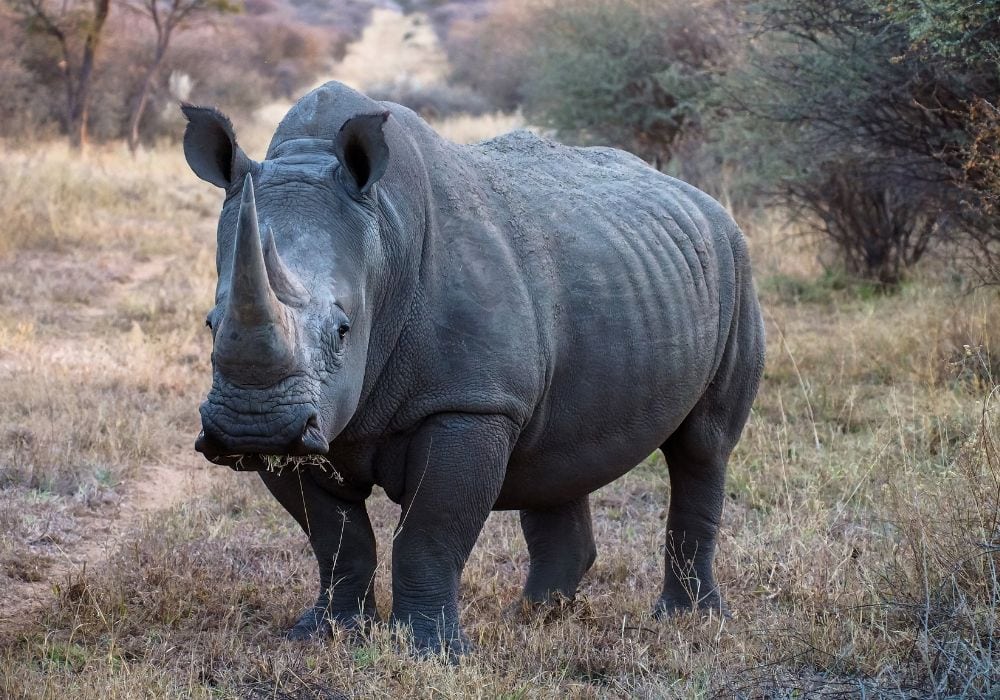Around the world, insufficient funding for conservation has undermined efforts to protect biodiversity and grow back wildlife populations. A 2020 report found that an annual biodiversity financing gap of US$711 billion needs to be closed by 2030 to effectively fund conservation activities.
A new strategy could turn things around: conservation impact bonds are outcome-based finance instruments that aim to close the gap by increasing returns when funded conservation projects are successful. Investors receive their capital back plus a return if certain measurable results are achieved.
“We know the government budgets are limited. We know that philanthropy is limited, particularly in the era where we are seeing declining amounts of both,” says James Pilkington, a sustainable-finance program manager at the Zoological Society of London, a science-driven conservation charity working to restore wildlife around the world. “So we really need to mobilize the private sector and private finance to fill that financing gap and invest in biodiversity.”
Impact bonds of this sort are alreadybeing implemented in South Africa. In 2022, the World Bank rolled out the Wildlife Conservation Bond to conserve and increase the population of endangered black rhinos in two protected areas in South Africa, Addo Elephant National Park and Great Fish River Nature Reserve. The five-year, $150-million bond, also called the “Rhino Bond,” raised private capital to finance the effort. At intervals, the growth rate of black rhinos will be independently calculated by Conservation Alpha, a conservation financing firm in Nairobi, and verified by the Zoological Society of London. And if successful, investors will receive a return on their investment, with the performance payment provided by the Washington, D.C.-based fund manager Global Environment Facility.
“It’s a relatively low-risk investment so investors know they are going to get their money back,” Pilkington says.
Returns on rhinos
South Africa has the world’s largest rhino population, with about 16,056 members occupying the country’s grasslands and savannas. However, poaching by criminal syndicates is a major threat. In 2024 alone, 420 rhinos were killed in South Africa, despite conservation efforts aimed at protecting rhinos and their habitats.
Ilesanmi Adeyemo, professor of wildlife ecology and conservation at Nigeria’s Federal University of Technology Akure, agrees that mobilizing funds from private capital to finance conservation activities “could be a good solution” to biodiversity conservation challenges in South Africa. “Rhinos are already endangered [in South Africa]. Projects like this [bond] will help conserve endangered species,” he says.
While the bond is specifically designed to conserve and increase the population of black rhinos in the protected areas, other species that share their habitat will also thrive, largely because rhinos are an umbrella species, so their conservation helps protect many other species within the same ecosystem, according to the International Rhino Foundation.
Additionally, South Africa’s economy will increase through tourism, and local communities will benefit from conservation-related jobs such as project managers, park rangers, park maintenance officers, gatekeepers and patrol guards. “Activities supported by this bond aim to increase rhino population growth by 4% while also improving the management of over 150,000 hectares and providing over 2,300 jobs for local communities in and around both protected areas,” Carlos Manuel Rodriguez, the Global Environment Facility’s CEO and chair, said in a statement.
Conservation bonds gain traction globally
While capital markets remain a novel source of funding for biodiversity protection, South Africa isn’t the only country where the strategy is being tried. In 2020, the environmental group Carolinian Canada and partners like Verge Capital and 3M launched a financial instrument called the Deshkan Ziibi Conservation Impact Bond, specifically to support habitat restoration and biodiversity conservation in the Carolinian Zone, a biodiversity hot spot in southern Ontario that’s home to one-third of Canada’s at-risk plants and animals.
RELATED
Solar energy is good for the planet, but it could be bad for birds
The ‘green label effect‘ for green bonds is real
Banks won’t solve the housing crisis, but community bonds just might
The project was successful, says Diane-Laure Arjaliès, founder of the Sustainable Finance Lab at Ivey Business School. She says it contributed to the restoration of 160 hectares of habitat, planted more than 39,000 native plants, and helped transform conservation practices in the area to include more Indigenous perspectives.
Conservation impact bonds are also gaining influence globally. The UN Environment Programme’s June 2024 data showed that private financing for nature-based solutions had grown significantly since 2020, representing a major gain in tackling the huge funding gap to finance conservation. UNEP added that “if nature finance keeps growing at this pace, we could close the [finance] gap by 2030.”
Growth of conservation finance still constrained
But Pilkington believes that getting investors to buy into biodiversity or general nature-based solutions does not come as easily as climate change mitigation and adaptation projects. This is because “markets for biodiversity and ecosystem services aren’t as well developed as carbon markets,” he says. “There isn’t the same enabling regulation that there is with carbon and climate change.”
Pilkington adds that most investors are not comfortable investing in biodiversity projects, largely because much of the world’s biodiversity values lie in developing countries. “Investing in these countries is challenging for investors. There’s some sovereign risk . . . issues around exchange rates, whether they will get their money back, as well as challenges with mobilizing domestic capital.”
Regardless, Pilkington says that capital markets still remain a viable option for conservationists to fund the protection of biodiversity. The only caveat is that for projects to be viable, they must have measurable outcomes and a third party willing to pay when the thresholds for higher returns are met, he adds.
“We have to focus on projects that are going to deliver quantifiable outcomes that can be measurable within the time period,” he says. “People want to see the difference on the ground in terms of, in this case, an increase in the population of rhinos, or a reduction in deforestation, or an increase in carbon sequestration.”
Patrick Egwu is a freelance journalist based in Toronto. He has reported from Chicago, Berlin and Johannesburg. He covers the environment, migration, health and conflict.
The Weekly Roundup
Get all our stories in one place, every Wednesday at noon EST.





